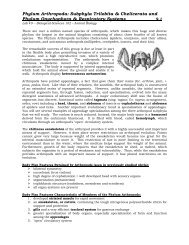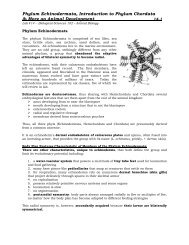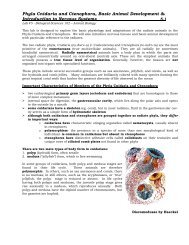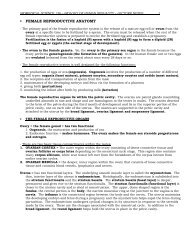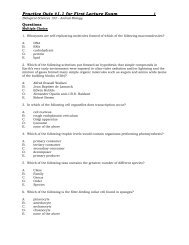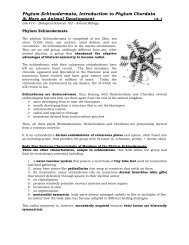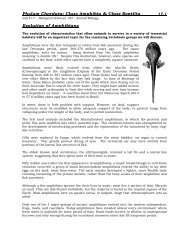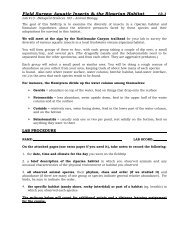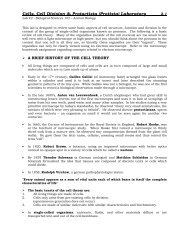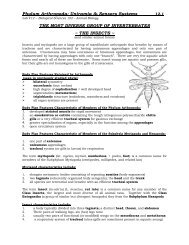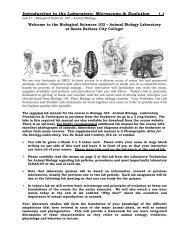Reptiles, Dinosaurs, Birds & Animal Locomotion and ... - Biosciweb.net
Reptiles, Dinosaurs, Birds & Animal Locomotion and ... - Biosciweb.net
Reptiles, Dinosaurs, Birds & Animal Locomotion and ... - Biosciweb.net
Create successful ePaper yourself
Turn your PDF publications into a flip-book with our unique Google optimized e-Paper software.
Phylum Chordata: Class Reptilia & Class Aves 18.8Lab #18 -- Biological Sciences 102 – <strong>Animal</strong> BiologyBird Anatomical FeaturesPhylum ChordataSubphylum VertebrataClass AvesUsing diagrams from the text/lab/inter<strong>net</strong> <strong>and</strong> a bird specimen from lab, find thefollowing bird features:External Bird Structures‣ head (are scales or featherspresent on your specimen?)‣ eye‣ bill‣ nostril‣ neck‣ thorax‣ abdomen‣ lesser covert feathers‣ middle covert feathers‣ greater covert feathers‣ scapular feathers‣ primary feathers‣ secondary feathers‣ tail feathers‣ rump‣ legs‣ feet (are scales present?)‣ where are the wing slots?‣ where is the cloacal opening?Skeletal Structures (on pigeon skeleton <strong>and</strong> diagram in textbook/lab)‣ skull‣ sclerotic ring around orbit of the eye‣ axial skeleton‣ appendicular skeleton‣ nostril‣ orbit‣ maxilla‣ m<strong>and</strong>ible‣ vertebrae (ending in urostyle)‣ scapula‣ fused clavicle‣ coracoid‣ sternum with keel‣ ribs‣ humerus‣ radius <strong>and</strong> ulna‣ carpals‣ metacarpals‣ phalanges/digits‣ pelvis/pelvic girdle‣ pygostyle (reduced tail vertebrae in modern birds)‣ femur‣ tibiotarsus (shin bone)‣ tarsometatarsus (fused ankle bone)‣ phalanges/toes (on feet) (how many toes does your specimen possess?)‣ What is the alula?‣ Muscles (see diagrams in text)‣ pectoralis major (ventral chest)‣ supracoracoideus (ventral chest)



